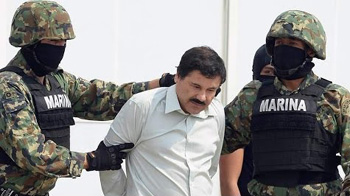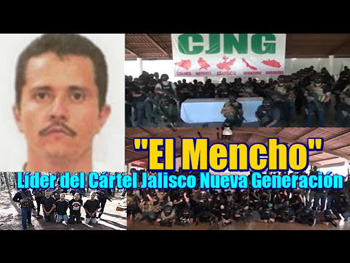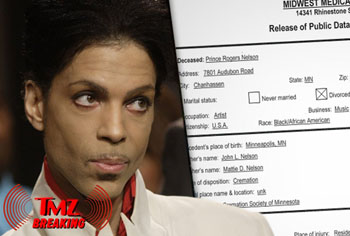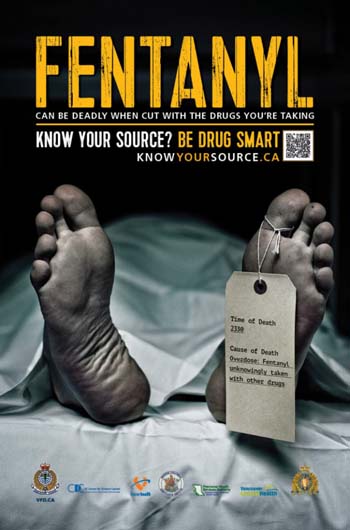By Mark Ellis
The Mexican drug cartels responded to the loss of revenue from the legalization or decriminalization of marijuana in the U.S. by flooding cities with cheap but potent Mexican heroin. Their crude response has also led to an unprecedented surge in overdoses and deaths gripping this country.
The serious allegation is contained in Don Winslow’s brilliant investigative piece in Esquire Magazine: “El Chapo and the secret history of the heroin crisis.”
“If you wonder why America is in the grips of a heroin epidemic that kills two hundred people a week, take a hard look at the legalization of pot, which destroyed the profits of the Mexican cartels,” writes Winslow in Esquire.
“Okay, I’m going to say it: The heroin epidemic was caused by the legalization of marijuana,” he brashly declares.
Four states have legalized marijuana completely, several more decriminalized it, and in many localities police have stopped enforcing marijuana laws, “creating a de facto street legalization.”
Some have applauded the changes, but not the Sinaloa Cartel, the dominant cartel in Mexico in 2012 at the time of Colorado’s legalization of the drug.
“Weed was a major profit center for them, but suddenly they couldn’t compete against a superior American product that also had drastically lower transportation and security costs,” Winslow notes.
Following the Colorado legalization, the cartel experienced a 40 percent drop in marijuana sales, representing the loss of billions to them. “Mexican marijuana became an almost worthless product. . . . Once-vast fields in Durango now lie fallow.”

Joaquín Guzmán Loera, the head of the Sinaloa Cartel known as “El Chapo,” is also a shrewd businessman. He wouldn’t absorb a forty percent loss in revenue without some response. “They had to make up those profits somewhere,” Winslow notes.
“Looking at the American drug market as it existed, Guzmán and his partners saw an opportunity. An increasing number of Americans were addicted to prescription opioids such as Oxycontin.”
The cost to an addict was high. One capsule of Oxycontin might sell on the street for thirty dollars, and a user might need ten doses a day.
“Well,” Guzman and his partners thought, “we have some of the best poppy fields in the world. Opium, morphine, Oxy, heroin—they’re basically the same drug, so . . .”
“The Sinaloa Cartel decided to undercut the pharmaceutical companies. They increased the production of Mexican heroin by almost 70 percent, and also raised the purity level, bringing in Colombian cooks to create “cinnamon” heroin as strong as the East Asian product. They had been selling a product that was about 46 percent pure, now they improved it to 90 percent.”
They followed classical economic theory to corner the market by dropping the price. A kilo of heroin cost nearly $200,000 in New York a few years ago, went for $80,000 in 2013, and now runs around $50,000. They created a more potent drug that cost less than other alternatives. They knew the combination would be irresistible.
“At the same time, American drug and law-enforcement officials, concerned about the dramatic surge in overdose deaths from pharmaceutical opioids (165,000 from 1999 to 2014), cracked down on both legal and illegal distribution, opening the door for Mexican heroin, which sold for five to ten bucks a dose.”
Sadly, opioid pill users were unprepared by the strength of this new heroin. Even addicts were taken by surprise.
“As a result, overdose deaths have skyrocketed, more than doubling from 2000 to 2014. More people—47,055—died from drug overdoses in 2014 than in any other year in American history. . . . That’s 125 people a day, more than five lives every hour, a fatality level that matched the AIDS epidemic’s peak in 1995,” Winslow notes.
After a series of high-profile escapes and recaptures, Guzmán was transferred in May 2016 to a prison near Ciudad Juarez, near the border with Texas. Extradition proceeding are underway to bring him to the United States.
Winslow compares Guzman’s imprisonment to the removal of Sadaam Hussein from Iraq, which created a power vacuum filled with violent struggles for supremacy by rival groups.
With Guzman incarcerated, a new group that is much more violent is vying for control: the Jalisco New

Generation Cartel (CJNG), which Winslow says is becoming Mexico’s ISIS.
Allegedly, they have been involved in the murder of Jalisco’s tourism secretary and the assassination of a congressman. In March 2015, they killed five police officers in one town. Two weeks later, they waylaid a police convoy and killed 15 officers. The next day, they murdered the police chief of another town.
In April 2016, they shot down a military helicopter with a rocket launcher. “Now they are taking on the Sinaloa Cartel in Baja, threatening the stability of the border region.”
As the drug wars heat up, an old drug, fentanyl, began to be smuggled more and more into the U.S. from Mexico. It’s a synthetic opioid 30 to 50 times stronger than heroin.

Fentanyl is so powerful that the DEA warns police they can be damaged just by touching it. Prince died from an overdose of fentanyl and more than 700 Americans overdosed on the drug in 2015.
For the cartels, there are advantages to switching to Fentanyl from heroin. “First of all, it’s made in a lab, so you don’t need fields of poppies that can be raided, fumigated, or seized,” Winslow notes.
Farmworkers are not needed to harvest the crop. While drug lords don’t require territory for cultivation, they still have to control a smuggling route, which has led to renewed violence in Baja, where the murder rate has tripled, according to Winslow.
Fentanyl brings massive profits to the cartels. A kilo of fentanyl can create a remarkable return of $1.3 million per kilo, compared with $271,000 per kilo of heroin.
“Because fentanyl is now often mixed with heroin to increase the latter’s potency, unaware heroin users are dying  from the same doses that used to just get them well. EMTs, ER personnel, and cops don’t know what they’re looking at, or that they need twice the dosage of naloxone, or Narcan, to revive an addict whose respiratory system has been shut down by fentanyl,” Winslow notes.
from the same doses that used to just get them well. EMTs, ER personnel, and cops don’t know what they’re looking at, or that they need twice the dosage of naloxone, or Narcan, to revive an addict whose respiratory system has been shut down by fentanyl,” Winslow notes.
The combination of lab-produced illegal fentanyl and the fracturing of the Sinaloa Cartel is a catastrophe for law enforcement and American society, Winslow laments.
U.S. law enforcement has had difficulty tracking and intercepting the drug. “First responders will not be able to tell if they’re dealing with pure heroin, heroin laced with fentanyl, pure fentanyl, fentanyl cut with God knows what … there will be pharmacological chaos.
“We talk about the heroin epidemic; fentanyl will be the plague.”
To see the complete article in Esquire, go here




You only quote one source, with no valid supporting statistics or corroboration from objective experts, and your entire report focuses on opiates without showing legitimate evidence for any link between opiate use and marijuana. This is a ridiculous opinion piece presented as journalistic reporting. As journalism, it’s terrible shoddy and its contentions do not hold up to intelligent analysis. I am presenting it to social media to reveal the ridiculousness of this sham of an article to a more intelligent public. They will get a good laugh out of it.
I have to agree with dh, very poor journalism “proving” the legalization of one thing leads to deaths by another substance. Shameful reporting indeed.
The author is not stating in this article that marijuana use leads to heroin use (although there may be a correlation).
Through his investigation of the cartels in Mexico, he looked at the economic forces that led them to flood the market with cheap heroin first, and now fentanyl.In the city of Cincinnati this week they had 174 opioid overdoses and three deaths. This is a public health emergency. Having smoked plenty of marijuana at Berkeley in the 70s, I know from personal experience it is not a benign drug.
You are right on Mark Ellis, marijuana is dangerous: mentally and physically.
I bet you didn’t realize the damage it had done you until months after you quit though. Different experiments show it takes at least three months of being off it, before the mj user can see the destruction done h, as per Elaine Walters research analysis.
Thank you for the clarity your comment brought re the two prior to it too.
Thump that bible! Both of you idiots don’t understand relative relations, correlations, and causation. Take a course on conducting valid, accurate research before you post your opinions. Why don’t you start by analyzing alcohol and tobacco, which there is far more evidence on correlations, with significant repeatable research on. As mentioned, many of the heroin addicts started from prescribed medication. There en route points to the problem. More recent repeated research is showing that marijuana has helped addicts overcome there life threatening addiction with a much safer alternative. I hope when you drink the cool aide, it’s at least your favorite flavor. Stop using marijuana as your scapegoat in fear of giving choice. Your business, I mean religion should follow its basic principl of helping others, rather than blaming. I’m all about a god but not when it’s fueled by guilt and blame.
You are once again ignoring the point of the article. Winslow’s piece is not about causation or correlations between marijuana and heroin. The issue is economics, and how the cartels responded to the changing playing field north of the border.
You took it upon yourself to insinuate a correlation.
Then you should title your article by what you actually mean. This is awful journalism.
In response to your comments, I have changed the title of the story.
Thank you. I did not expect that to happen. That is the step in the direction of validity. Avoid circular reasoning. It would be a similar comparison stating that impeding Stalin led to the rise of Hitler.
“Creation of the Internet led to the epidemic of opionated idiots thinking they are journalist”
I can over generalize too, however my anecdote is probably more valid then your article.
I recently heard on NPR from a DEA director that majority of uppers around 85% of the fentanyl found In the US is produced in China based labs. Anonymous accounts can be opened online in which they are shipped to the US from China. The article should focus on that, but then you can’t condemn marijuana legalization.
Comments are closed.